Check out this super cool experiment that uses the expanding power of yeast to inflate a balloon! You and your kids will love doing this Yeast Balloon Experiment together.
Get more amazing Balloon Science Experiments here!
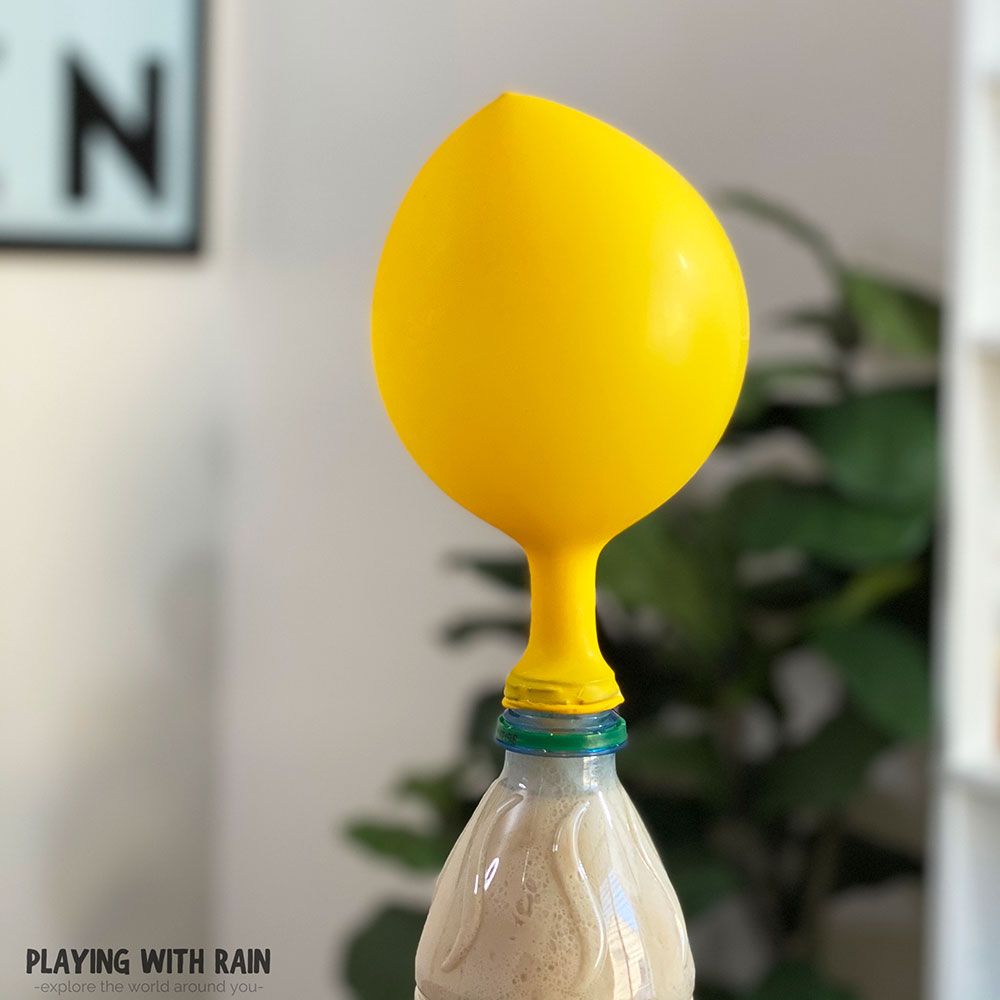
This is a mind-blowing (and balloon blowing) way to learn about the common reaction of yeast, sugar, and water!
Yeast Balloon Experiment
This post may contain affiliate links. As an Amazon Associate, I earn from qualifying purchases.
Supplies Needed:
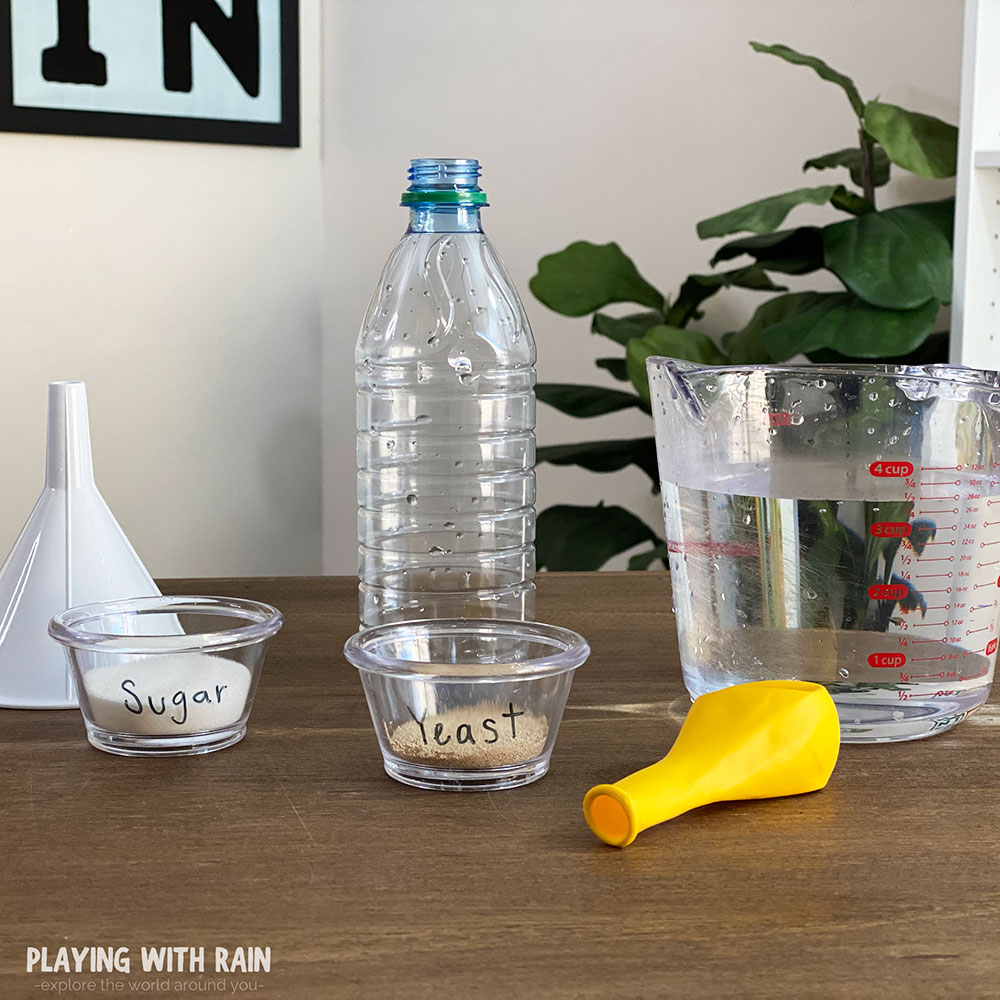
How to Inflate a Balloon With Yeast
- Fill a plastic bottle with about 1 inch of warm water.
- Pour in about 1 tablespoon of yeast and gently shake the bottle up a little bit.
- Add a teaspoon of sugar and swirl the bottle around a little more.
- Slide the neck of the balloon over the opening of the bottle.
- Let the yeast work its magic for about 15-20 minutes. The balloon should slowly start to inflate!
Step 1: Pour Warm Water Into a Plastic Bottle
I prefer to use a clear plastic bottle for this so that you can see the reaction of the rising yeast inside, but you really can use any type of small empty water bottle for this.
The important part is to pour enough warm water into the bottle so that that the water is about an inch deep inside the bottle.
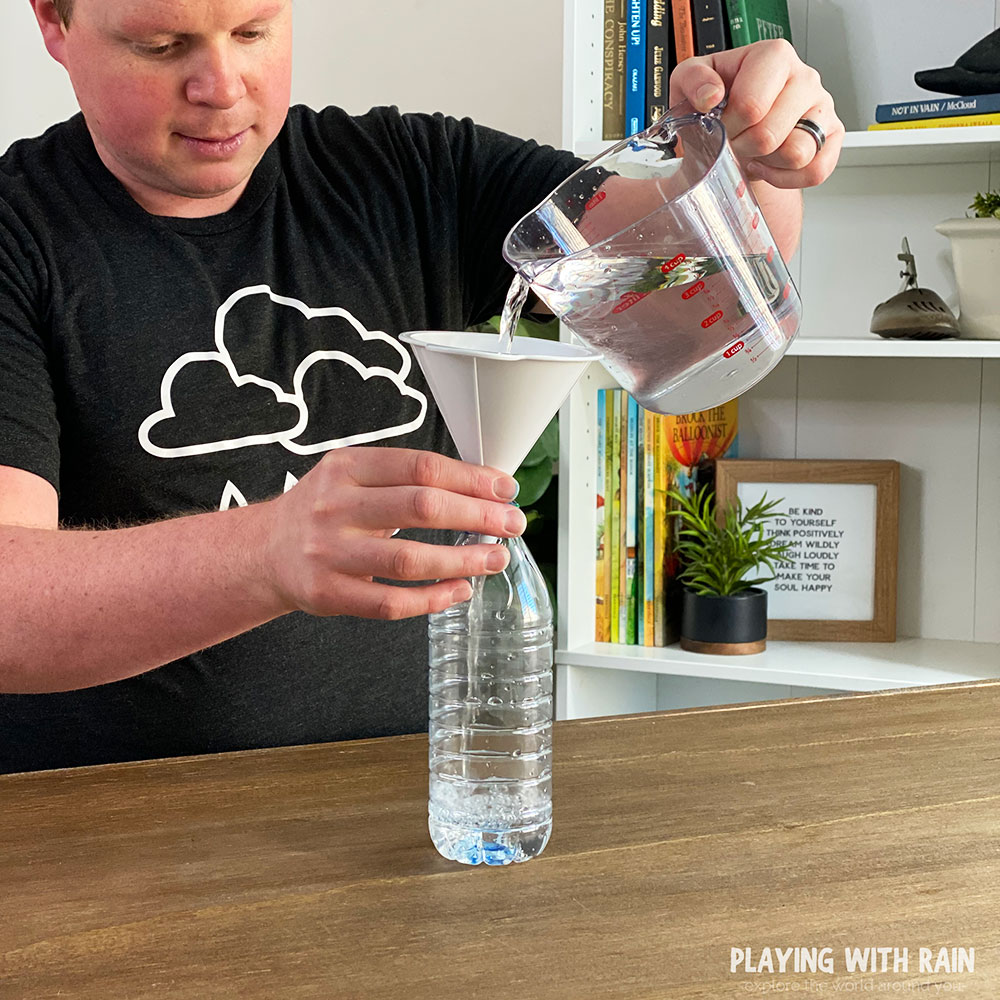
If you bake with yeast often, then you will already know that the water needs to be warm, but not too warm or it will kill the yeast (I had to learn this from my wife who does the baking in our family).
Step 2: Add Some Yeast Into The Bottle
If you have the small little packets of yeast, you can dump one of those into the bottle, or you can measure and pour about 1 tablespoon of yeast from a large packet of yeast.
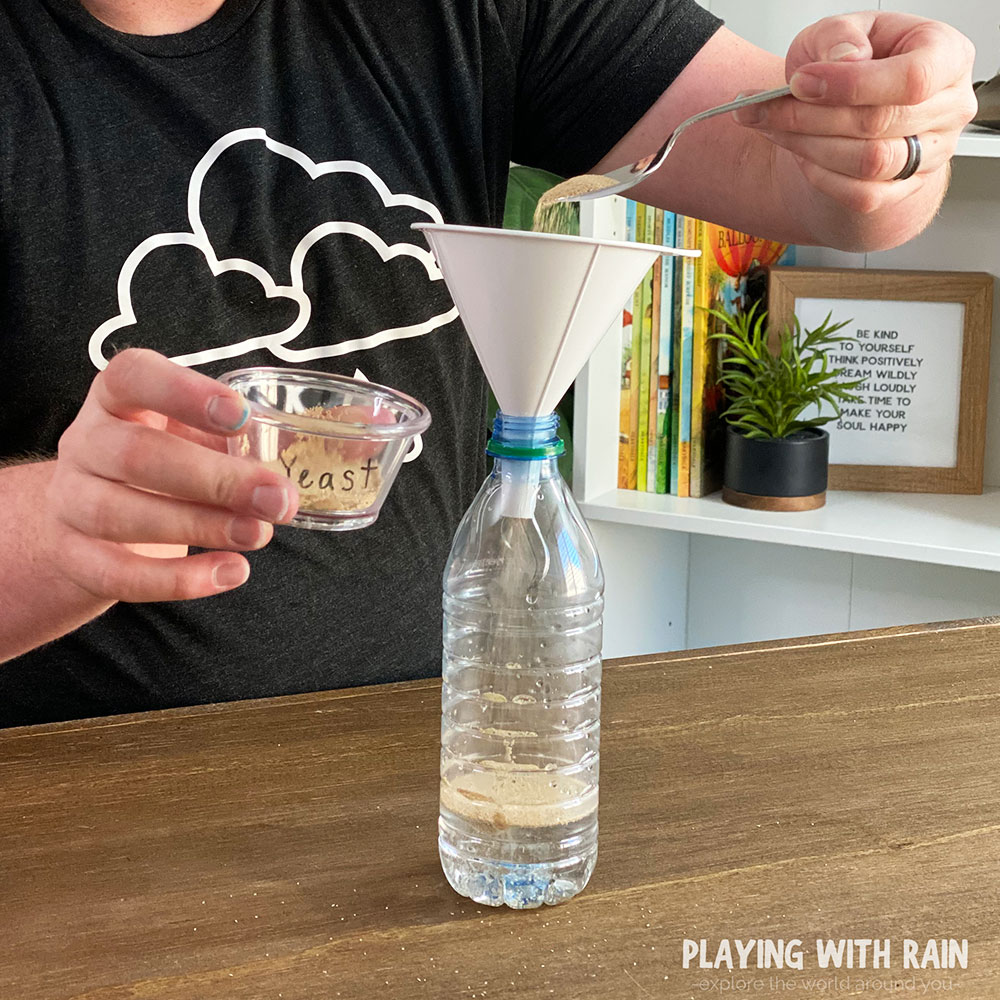
Using a funnel will make this a little easier and a little less messy to get the yeast inside the bottle.
Step 3: Add Some Sugar
Measure and pour about 1 teaspoon of sugar into your bottle of yeast and warm water. Again, using a funnel will help you get less sugar on the counter and more sugar into the bottle.
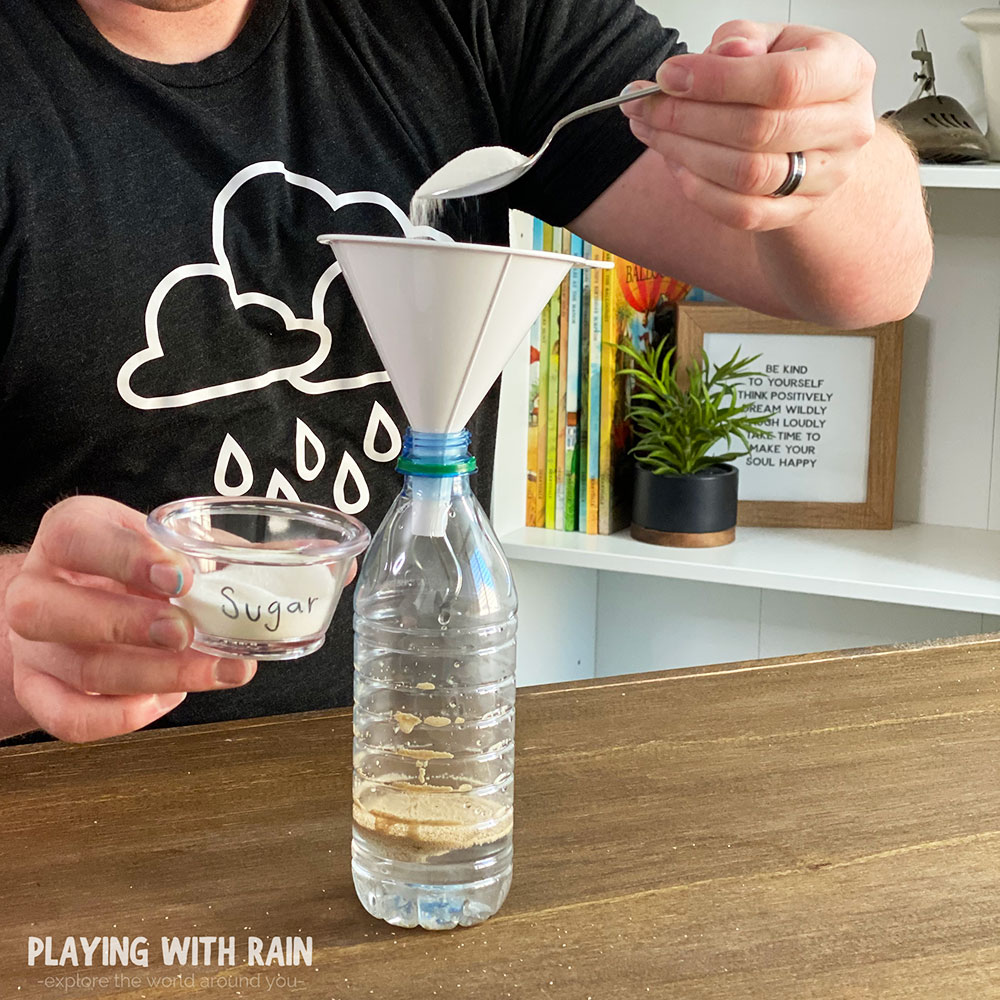
Step 4: Attach The Balloon to The Bottle
Quickly, but carefully connect a large balloon to the opening of the bottle. It may help to inflate and then deflate the balloon first just to stretch it out a little bit.
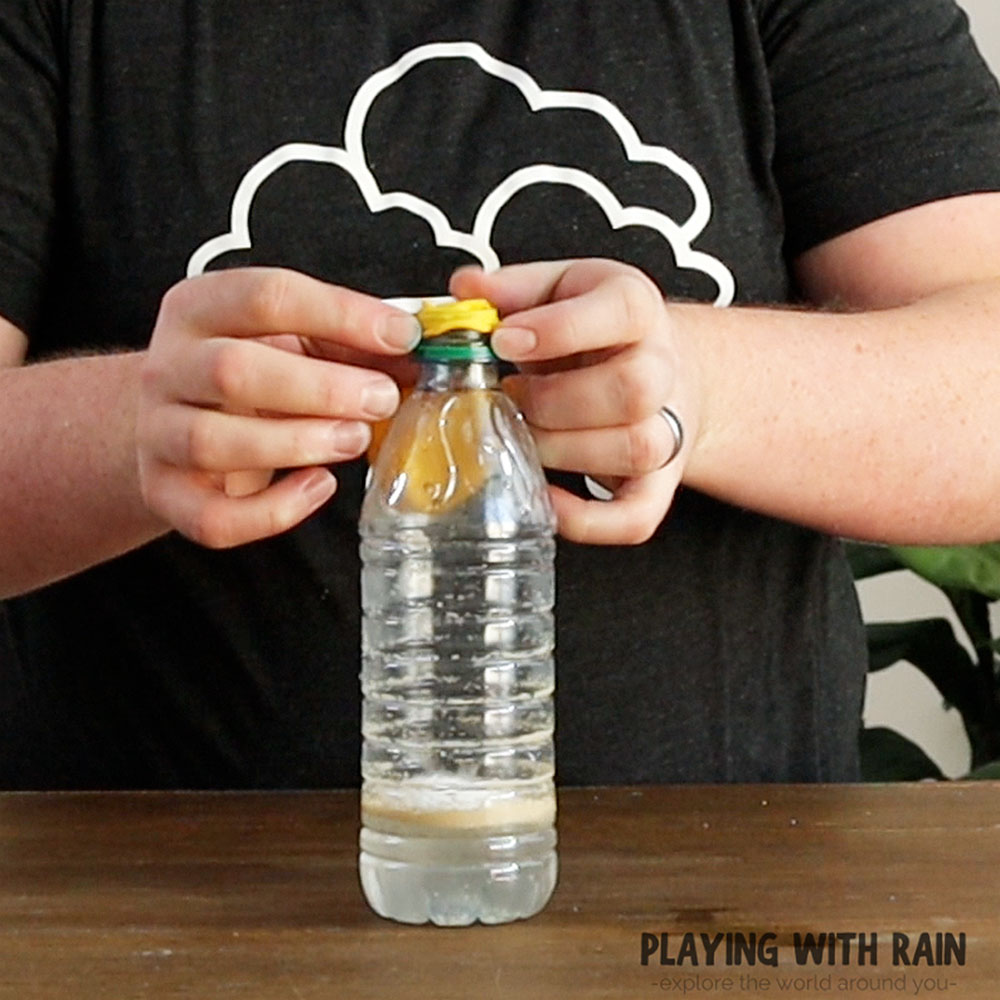
Then slide the mouth of the balloon over the opening of the bottle. Make sure the balloon is snug and sealed onto the bottle to prevent any air from escaping between the bottle and the balloon.
Give the bottle a little swirl or shake to mix the warm water, yeast, and sugar together. This should start the classic yeast reaction that we need for this experiment!
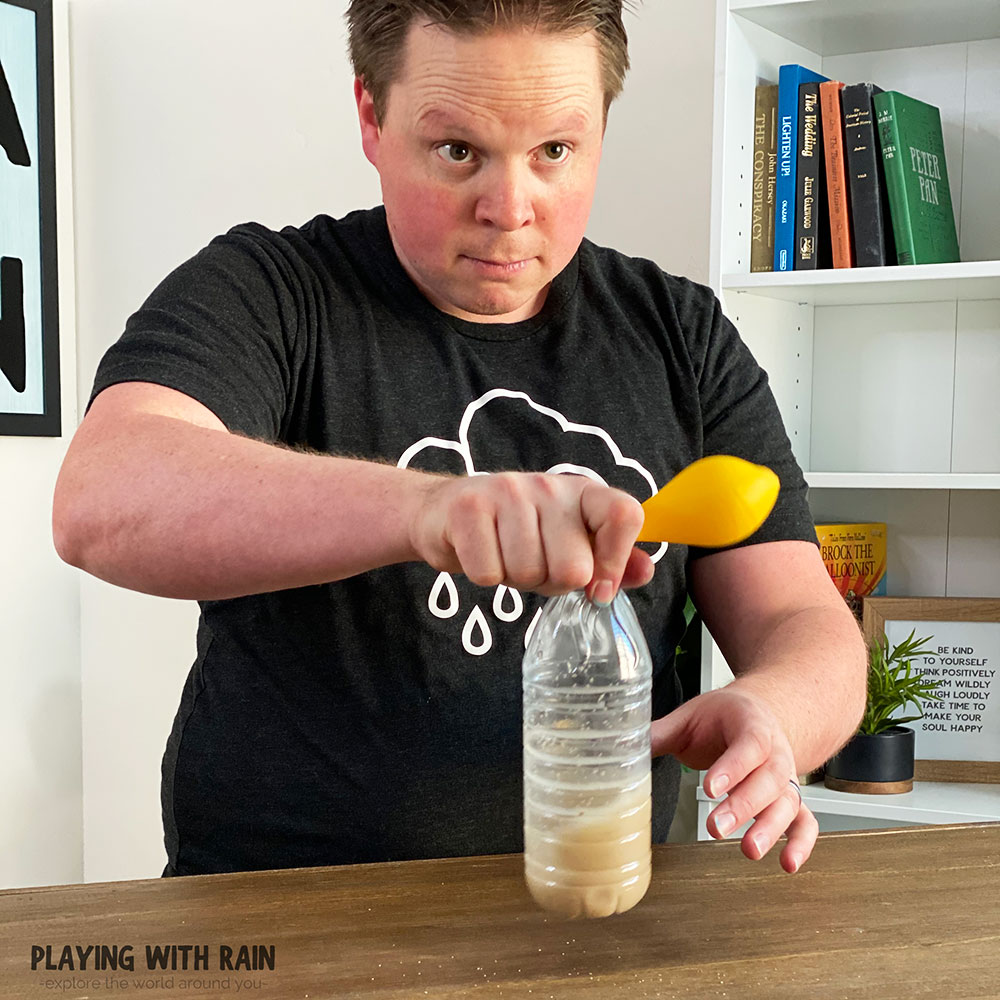
Step 5: Wait Patiently For The Reaction to Inflate The Balloon
The hardest part of this experiment is waiting 15-20 minutes for the reaction to happen and inflate the balloon…but I promise it will be worth it!
So set the balloon and bottle in a safe and secure place, go grab a snack and come back in a few minutes to check on it.

You can also try doing what I did and setting up your phone or camera for a time-lapse video of the reaction. It’s super fun to go back and watch the reaction inflate the balloon with the time-lapse.
After a good 15 or 20 minutes, the yeast, water and sugar should have reacted and expanded inside the bottle, and the balloon will inflated too!

Yeast Balloon Experiment Conclusion
The science behind this yeast balloon experiment is related to the same reason yeast is used in many bread, dough, and baking recipes!
Yeast is a single-celled organism described as a “sugar-eating fungus”. Yeast needs food, warmth, and moisture to thrive and grow.
As the yeast grows and converts the sugar into energy, it releases Carbon Dioxide gas in a process called fermentation.
The tiny little carbon dioxide (CO2) gas bubbles get trapped in bread dough as it bakes and is what makes bread so soft and spongy!
Now in our experiment, the warm water in the bottle provides warmth and moisture for the yeast, while the sugar provides the food for the yeast to grow and expand.
The addition of carbon dioxide in the bottle increases the air pressure in the bottle, which pushes air into the balloon and inflates it!
This Baking Soda and Vinegar Balloon Experiment is also another fun way to inflate a balloon if can’t find any yeast in your kitchen cabinets!
PIN THIS EXPERIMENT FOR LATER

Leave a Reply